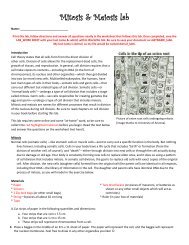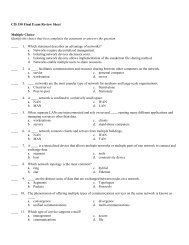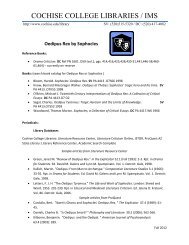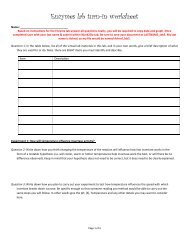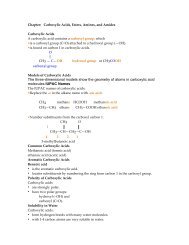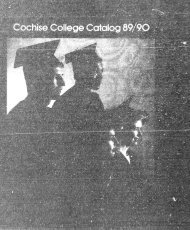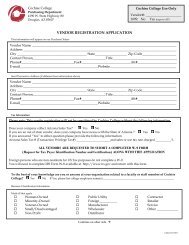Create successful ePaper yourself
Turn your PDF publications into a flip-book with our unique Google optimized e-Paper software.
Ketone BodiesIf carbohydrates are not available• body fat breaks down to meet energy needs.• compounds called ketone bodies form.• if large amounts of acetyl CoA accumulate.• when two acetyl CoA molecules form acetoacetyl CoA.• when acetoacetyl CoA hydrolyzes to acetoacetate.• when acetoacetate reduces to β‐hydroxybutyrate or loses COB2B to form acetone, bothketone bodies.Ketosis occurs• in diabetes, diets high in fat, and starvation.• as ketone bodies accumulate.• when acidic ketone bodies lowers blood pH below 7.4 (acidosis).In diabetes• insulin does not function properly.• glucose levels are insufficient for energy needs.• fats are broken down to acetyl CoA.• ketone bodies form.Proteins provide• amino <strong>acids</strong> for protein synthesis.• nitrogen atoms for nitrogen‐containing compounds.• energy when carbohydrate and lipid resources are not available.In transamination• amino <strong>acids</strong> are degraded in the liver.• an amino group is transferred from an amino acid to an α‐keto acid, usually α‐ketoglutarate.• a new amino acid, usually glutamate, is formed.• a new α‐keto acid is formed.Synthesis of Amino AcidsIn humans, transamination of compounds from glycolysis or the citric acid cycleproduces nonessential amino <strong>acids</strong>.Oxidative deamination• removes the amino group as an ammonium ion from glutamate.• provides α‐ketoglutarate for transamination.



